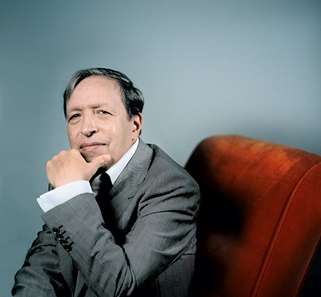|
Back
The Tempest New York
Avery Fisher Hall, Lincoln Center
03/09/2014 -
Johann Sebastian Bach: French Suite No. 4, BWV 815
Ludwig van Beethoven: Sonata No. 23, opus 57, “Appassionata”
Robert Schumann: Papillons, opus 2
Frédéric Chopin: Nocturne in B Major, Opus 62, No. 1 – Etudes in A-flat Major, Opus 25, No. 1, in E Minor, Opus 25, No. 5, & in C-Sharp Minor, Opus 10, No. 4 – Scherzo No. 2, opus 31
Murray Perahia (Pianist) 
M. Perahia (© Felix Broede)
A few decades ago, one approached a recital by Murray Perahia as if decanting a bottle of 2003 Beaucastel Chateau wine. This was not an evening for unalloyed enjoyment. It was an evening for purity, unmistakable genius, a Mozart which brought memories of 18th Century Versailles, a Chopin of hushed tones and the whispers of royalty.
That was the young Mr. Perahia. After yesterday’s recital, one could say that as he has become more mature, his music has become...well, put it this way. Murray Perahia has become untethered.
No, he doesn’t take licenses with his beloved Bach and Chopin and Beethoven. And his fingering, tone and immaculate touch are as jewel-like as ever. But yesterday, Mr. Perahia was ready to take chances, to be unconventional, to actually eschew pristine purity for unfettered emotion.
The opening Bach Fourth French Suite had more than Gallic danceability. Mr. Perahia never tried to strum the work into a Baroque statement, or even gave a hint that it was composed for an innocent spinet or harpsichord. Keeping his foot on the pedal, he turned it into a full–blown Romantic suite, the piano resounding. That pleasant gavotte could have been an outtake from the following Beethoven “Appassionata”. The gigue was a whirlwind of dazzling different tunes at different levels. The speed was as audacious as the clarity was clear.
Methinks that J.S. Bach might have thought to himself, “Now why didn’t somebody give me a player and an instrument like that. This is real music.”
The image of Vladimir Horowitz was in the forefront of the Beethoven, for Mr. Perahia was never afraid to pound the piano, to give a sforzando bang to the most unlikely notes. He worked these outer movements not with controlled Chopinesque revolution, but an angry composer who could barely control himself.
The genius of Perahia, though, was that these sudden outbursts never detracted from the incredible finger work. Yes, it was loud but never unpleasant. The speed never ever looked like it would be out of control, even in the torrential finale and coda. The central andante was a second-wind time for breath (as apart from breadth), but somehow Mr. Perahia brought out, even in these limpid variations, melodies in the bass which had been unknown.
After the intermission, Schumann’s Papillons was something of an anti-climax, as the Beethoven was still ringing in the ears. But the twelve dance movements had enough charm and variations for satisfaction.
The last section was Chopin, and Mr. Perahia never surrendered his sense of absolute beauty. His tempos were marginally faster than usual in the Etudes, but he never sacrificed tone. And just to show how ornery he can be, the Scherzo, which can fall apart under lesser hands, was played here with an ethereal combination of gravity-defying airiness and just a bit of bite.
This was a pianist in a trouble-free mood. He played three encores (another Chopin, a Schubert, and a Brahms), and would have played more save for the propriety of being a Brooklyn artist living in London.
For this artist was a very different Perahia. At the ripe young age of 66, he is still dazzling, still transcendent. But after six decades of playing “correctly”, he is now daring, he takes chances, and has given up the pianistic monastery for the visceral life outside the monastic walls.
Harry Rolnick
|